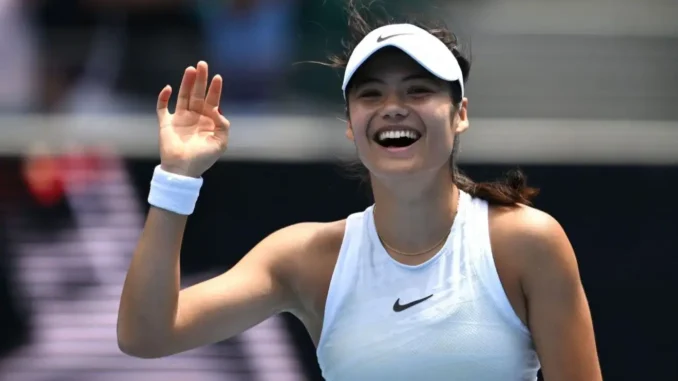
The world of professional tennis is a realm of constant flux, where fortunes can shift with each passing match, and rankings are a perpetually moving target. For Emma Raducanu, the journey has been a captivating saga, marked by the dizzying heights of Grand Slam glory and the demanding realities of sustaining peak performance. The latest discourse surrounding her potential seeding at the French Open underscores the intricate dance between talent, tenacity, and the ever-evolving landscape of the WTA tour.
To truly grasp the significance of this discussion, it’s essential to delve into the nuanced mechanics of tennis rankings and seeding. These systems, far from being arbitrary, serve to ensure a degree of fairness and predictability within tournaments. A player’s ranking, a numerical representation of their performance over the preceding 52 weeks, dictates their position in the draw. Seeded players, those occupying the higher echelons of the rankings, are strategically placed to avoid early clashes with other top contenders, thus preserving the integrity of the competition.
Raducanu’s trajectory has been a compelling narrative of both triumph and tribulation. Her historic US Open victory catapulted her into the global spotlight, an achievement that etched her name into the annals of tennis history. However, the ensuing period has been characterized by the inherent challenges of navigating the professional circuit, including the inevitable fluctuations in form and the ever-present specter of injury.
Here’s a deeper dive into factors influencing her situation:
- The Volatility of Rankings:
- The WTA rankings are a dynamic system, subject to weekly revisions based on players’ performances. This volatility means that a player’s position can change rapidly, influenced by factors such as tournament results, points earned, and points lost.
- For Raducanu, this has meant experiencing both upward surges and downward dips in her ranking, reflecting the inherent unpredictability of the sport.
- It is important to remember that the clay court season, like the French open, has very specific needs, and some players perform better on clay than on other court types. This factor also influences ranking.
- The Rigors of the Tour:
- The professional tennis tour is a grueling endeavor, demanding exceptional physical and mental fortitude. Players are required to travel extensively, adapt to varying court surfaces, and maintain peak performance under intense pressure.
- Raducanu’s experience has underscored the physical demands of the tour, with injuries playing a role in her recent seasons. The need to maintain optimal health and fitness is paramount for sustained success.
- The mental strength needed for professional tennis is immense. The pressure of performance, and the constant media attention, are factors that all professional tennis players must deal with.
- The Clay Court Challenge:
- The French Open, held at Roland Garros, presents a unique challenge due to its clay court surface. Clay courts demand a distinct set of skills, including exceptional footwork, patience, and the ability to generate spin.
- Adapting to clay requires a significant adjustment for many players, and Raducanu’s preparations for the French Open will be crucial in determining her performance.
- The clay court season is shorter than the hard court season, so players have less time to adapt.
- Injury and Resiliency:
- The reality of professional sports is that injuries are an unavoidable part of the journey. Raducanu has faced her share of physical setbacks, requiring periods of recovery and rehabilitation.
- Her ability to bounce back from these challenges speaks to her resilience and determination. The focus on injury prevention and maintaining long term health is a key factor in her current approach.
- Modern sports medicine has greatly improved the ability of athletes to recover from injuries, and to maintain peak physical condition.
- Seeding Implications:
- Seeding at the french open is very important because it greatly effects the players path through the tournament.
- The possibility of Raducanu securing a seeded position at the French Open hinges on a complex interplay of her current ranking, the rankings of other players, and potential withdrawals from the tournament.
- Even if she is not seeded, her presence in the tournament will add significant excitement and interest.
In essence, the narrative surrounding Emma Raducanu’s French Open prospects is a microcosm of the broader complexities of professional tennis. It is a story of ambition, adversity, and the unwavering pursuit of excellence.
Leave a Reply